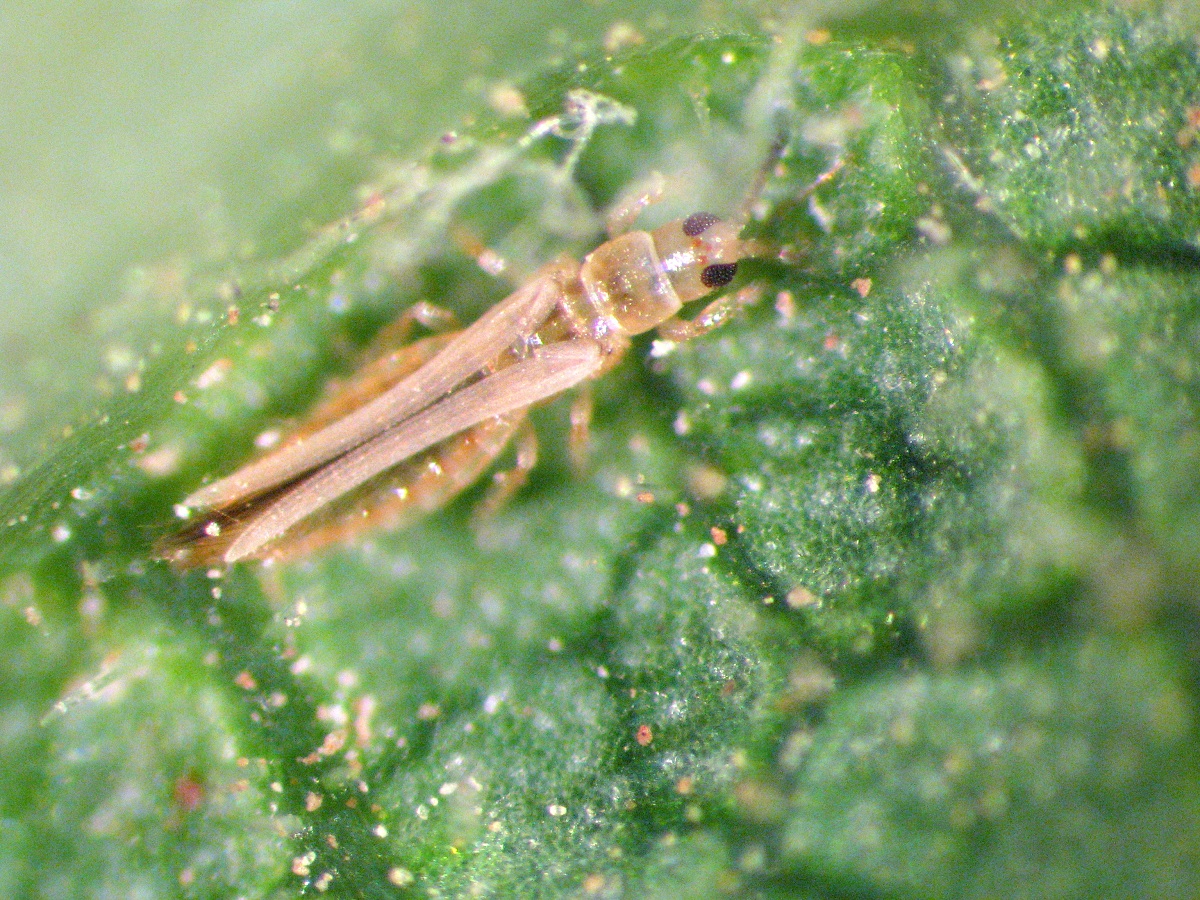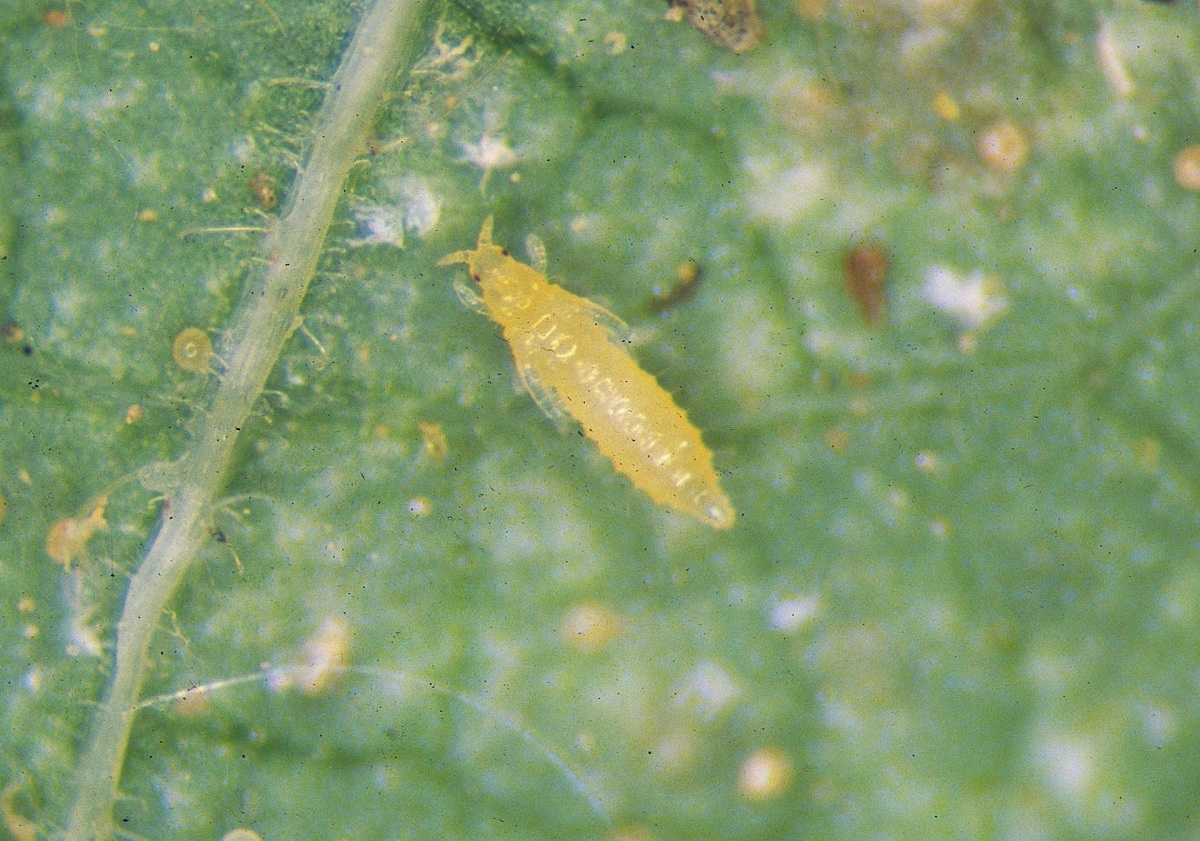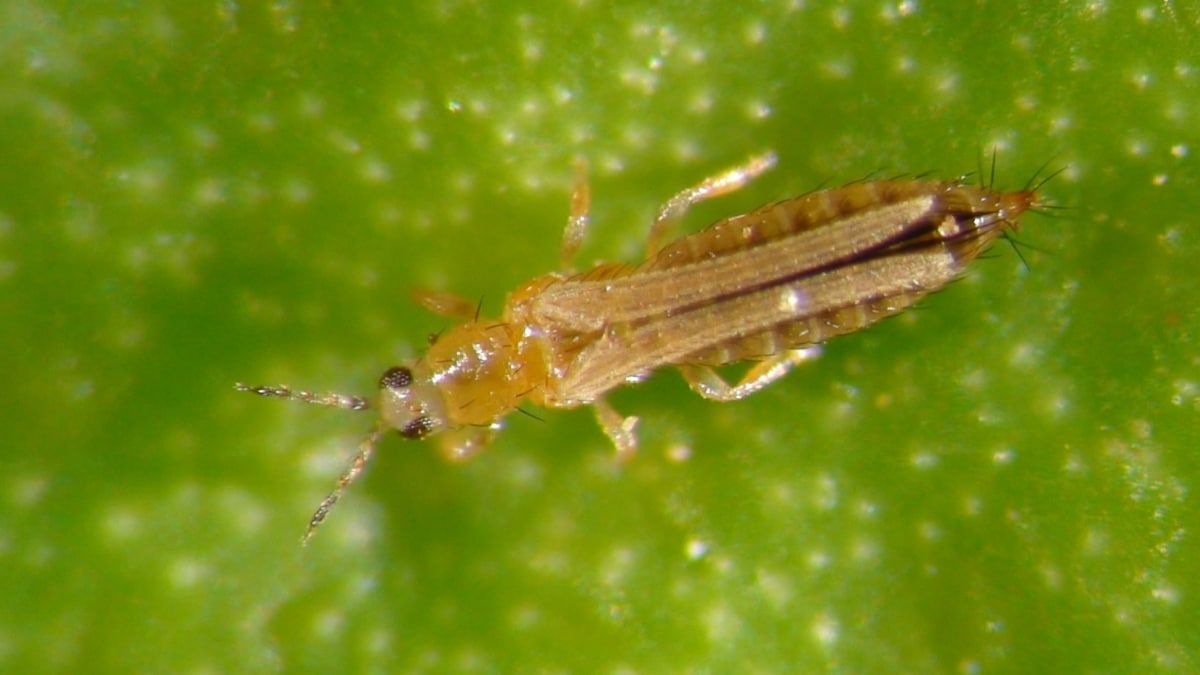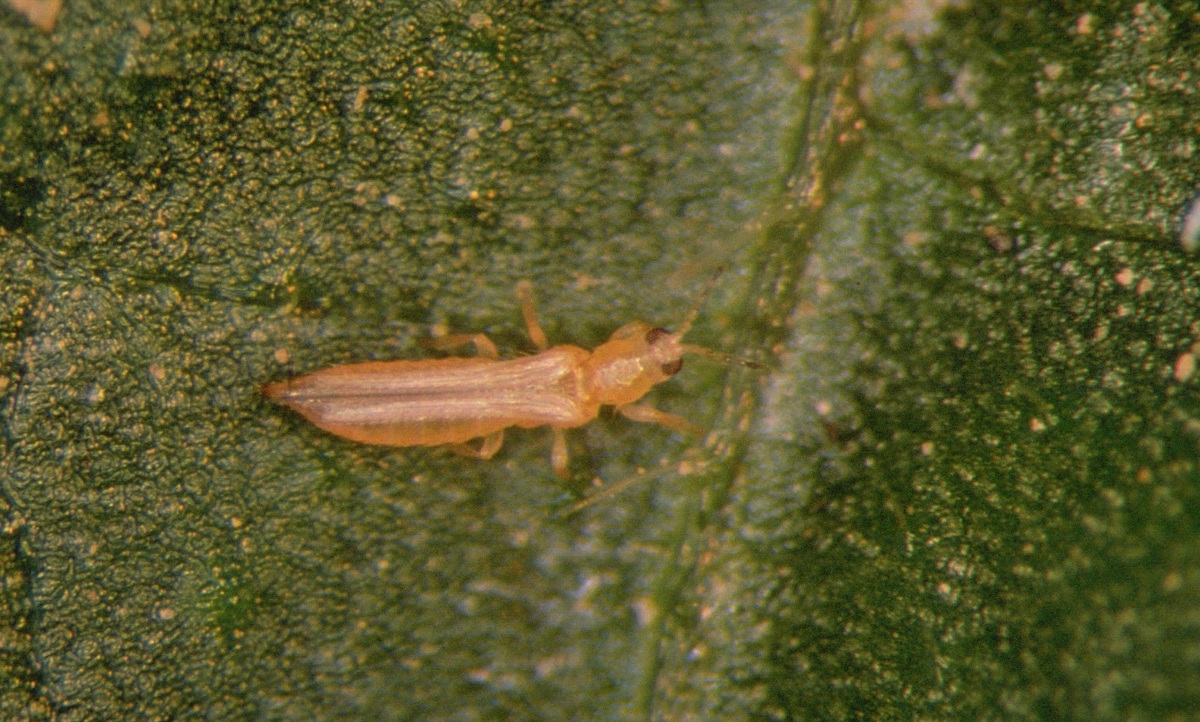
There are many pests that attack our crops if we do not maintain certain optimal conditions. Sometimes, although we are extremely careful with our plants, it is inevitable that many insects will do their thing to feed and reproduce through our crops. Today we are going to talk about one of the pests known as flower thrips. It's about the Frankliniella occidentalis.
In this article we are going to tell you all the characteristics, biological cycle, treatment and curiosities about the Frankliniella occidentalis.
Key features

This type of insect is considered one of the most problematic when establishing our crops. It is a type of tisanopteros that are known by the name of thrips or spider mites. These small insects they feed on crops and carry viruses. This makes the problem double. And it is that, not only is it capable of attacking our plants and killing their leaves and fruits, but it also helps to spread diseases.
Within the order of the Thysanoptera there are thousands of species. However, the one that needs to be paid more attention given its importance as a pest and vector of virus is the Frankliniella occidentalis. These insects are pests of many essential crops such as tomatoes. In order to detect these thrips, it is necessary to look for them mainly in the flower buds. We can also find ourselves through some signals that they leave as they act on the crops. These ways of leaving a trace they are silver spots on the leaves that are generated as a product of the suction of this insect and the chemical reaction that occurs between the leaf and its saliva.
Fruits that are just growing and maturing are also damaged by these insects. As in the flowers and leaves, if the trip ends up attacking these fruits, we can see the silver spots that we have mentioned previously.
Biological cycle of the pest Frankliniella occidentalis

We are now going to analyze what is the biological cycle of these insects in order to learn more about their biology and reproduction. The period when it is just one egg usually lasts between 4 and 8 days. When they hatch, they are called nymphs and this period is the one they need a lot of food to grow. It is here where they produce the greatest damage to crops since they need large amounts of food to develop into adulthood. This nymph cycle lasts between 4 and 7 days.
It is here where they also leave the silver spots after sucking on the leaves and the fruits of our crops. Once the nymph stage has passed, it becomes a pseudopupa that lasts between 2 and 6 days. In this small stage it already begins to prepare to become an adult individual and, although its suction rate on the leaves and flowers of cultivated plants is lower, they also continue to cause damage.
Finally, they pass to their adult stage in which they spend several days and mainly use this stage for their reproduction. It is on these days that the insects reproduce to deposit the eggs again on the underside of the leaves. The ideal way to kill this pest is to attack when they are still eggs or nymphs. Thus, we do not allow them to develop to adulthood and reproduce in quantity.
Biological control of Frankliniella occidentalis

In order to carry out a biological control we must first know that it is one of tomato tan virus vectors. This virus occurs as these insects inject saliva and introduce it into the sage when they are nymphs. Although this virus is known as tomato tan, it is not exclusive to this nightshade. This virus also attacks other main crops such as lettuces, aubergines, strawberries, cabbages, peppers, among others.
Therefore, we need to carry out a biological control to reduce the populations of the Frankliniella occidentalis and what better than without using chemicals to damage our crops. One of the insect genera that you can find effectively with these thrips is the Orius. They are nothing more than Heminoptera that belong to the Anthocoridae family and that help to control the populations of these insects at the same time as the Red spider and White fly.
The Orius have an advantage in the biological control of pests and this is a species that is not at all rare that we have to be introducing our crops. These insects are established by themselves as long as there is a balance of populations. Normally, if we use insecticides in our crops, it is normal that they cannot spread to the population.
If we want to see that this biological control is taking effect, we only have to carefully observe the flowers when it begins to bloom. If we inspect it carefully we can see how the Orius prey on thrips, killing them and reducing their populations. Nevertheless, Orius are very sensitive if we apply common insecticides that can be used in crops normally such as imidacloprid.
How to use the Orius

Frankliniella occidentalis
Because it is a biological control and it is not something as common as the use of insecticides is, we are going to explain how the Orius should be used. First of all is to detect the Frankliniella occidentalis. Once we have seen and located this pest we must carry out a release of these predators. One of the best times to do the Orius swede is when flowering begins. When the flowering of these plants begins, the Orius is released without the presence of Frankliniella occidentalis.
The loosening must be done mainly on the leaves and we let it act for a few days. At that time the reproduction and development of the insect begins. During these days of operation, it is also interesting to apply carefully in those foci of the plants where there is more quantity of Frankliniella occidentalis. The good thing about the Orius regarding other types of pest control is that It preys on more enemies than it can eat. This means that, although it does not end up eating all the trips, it will end them.
I hope that with this information you can learn more about the plague of the Frankliniella occidentalis.